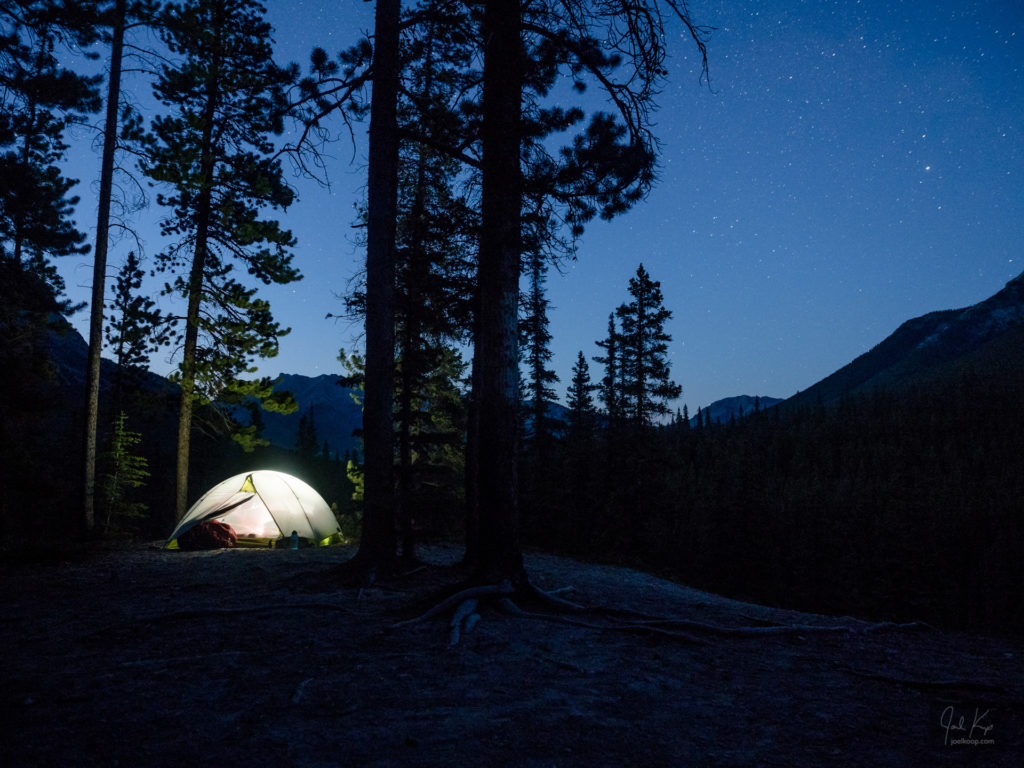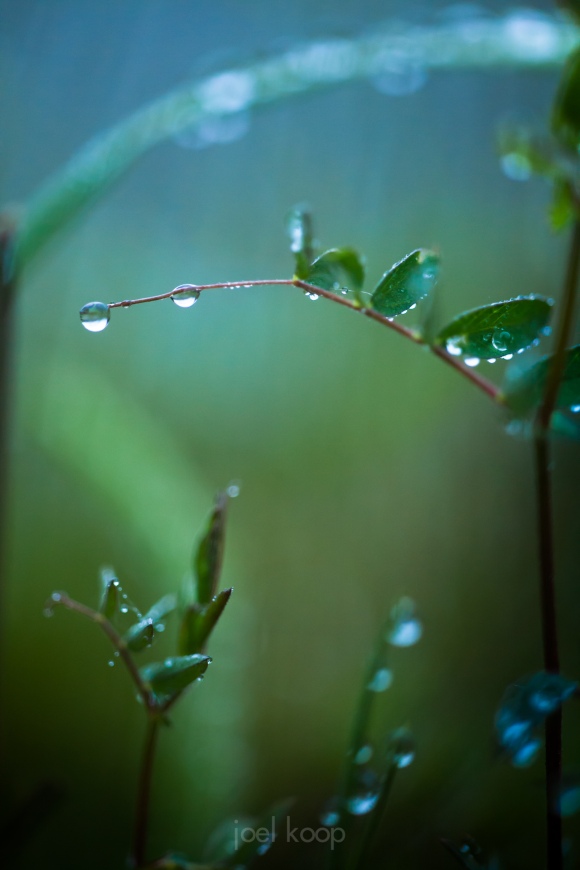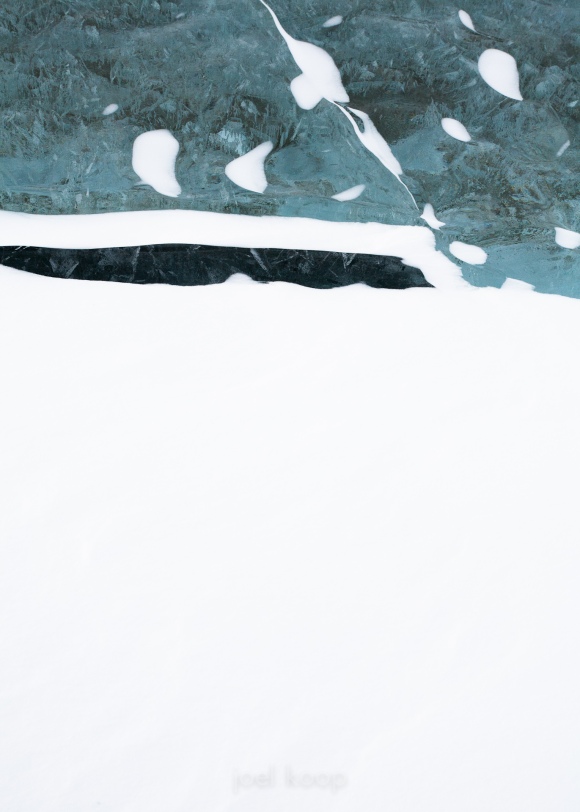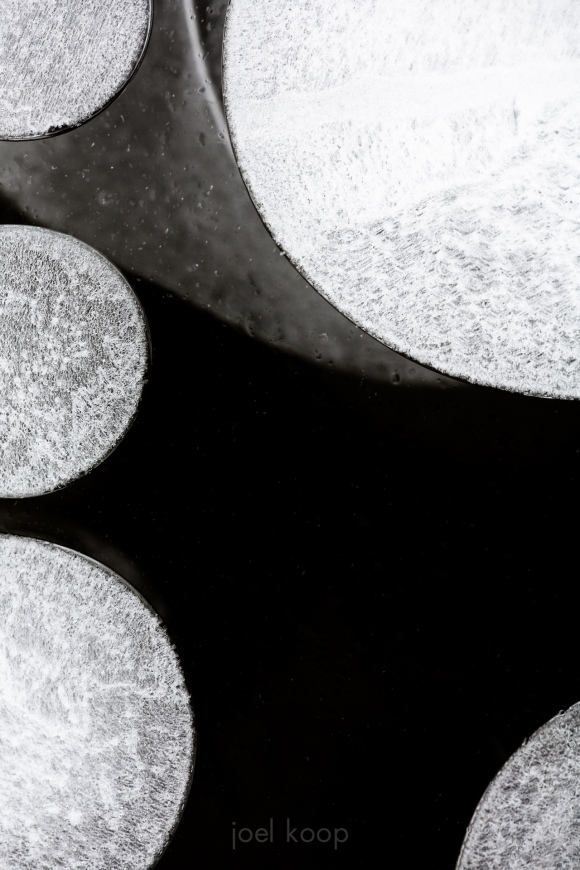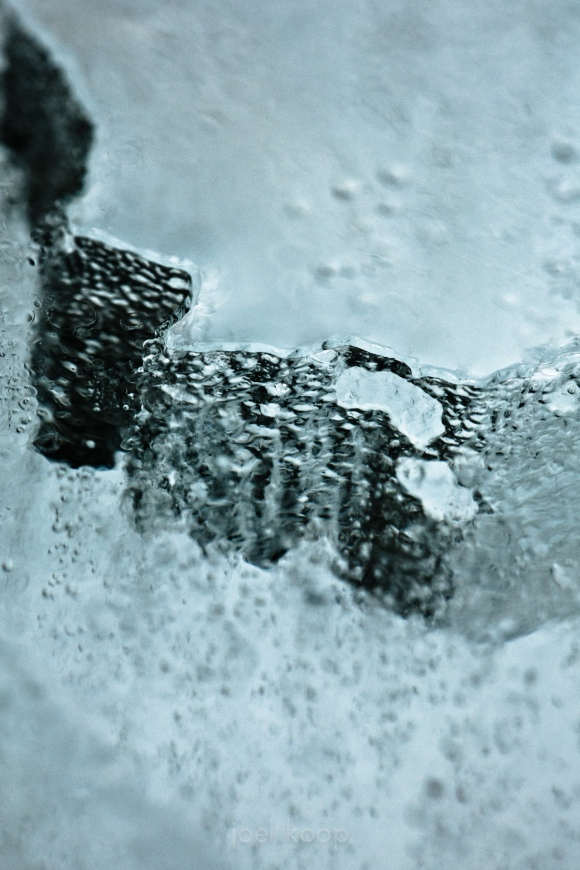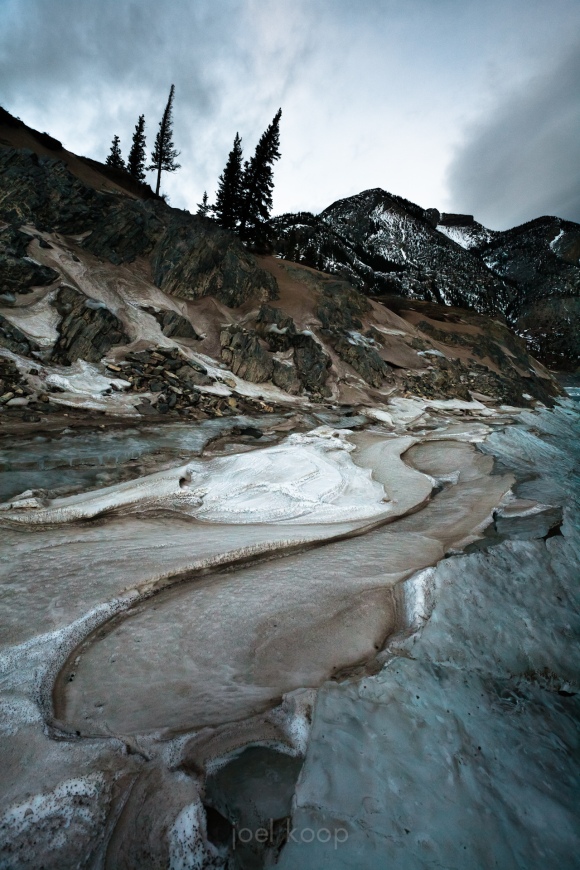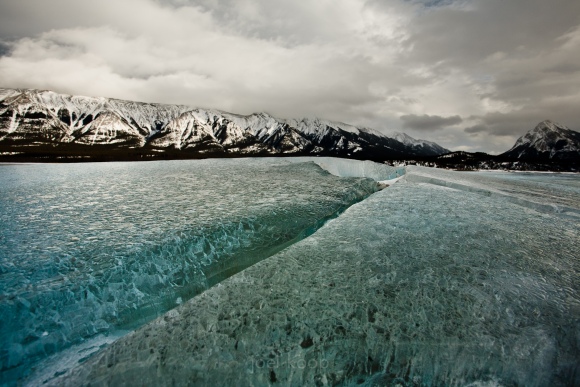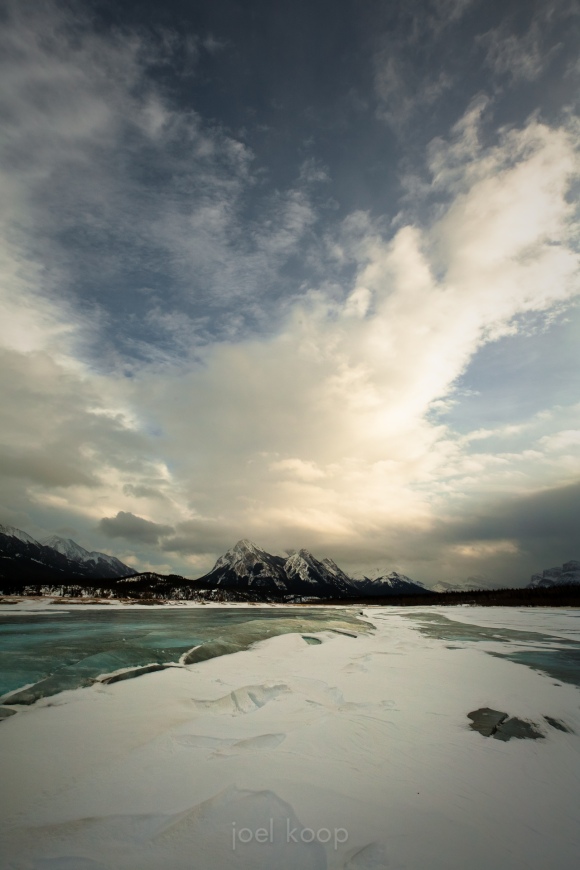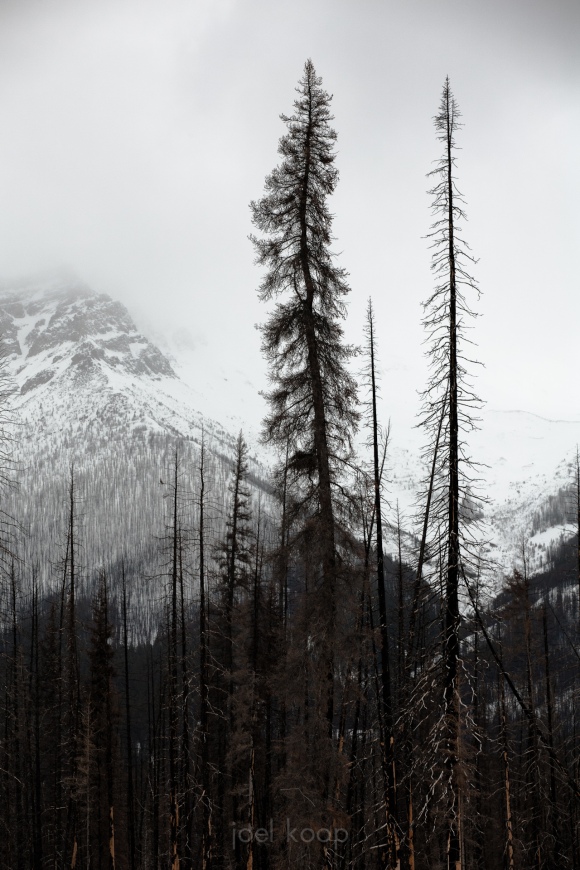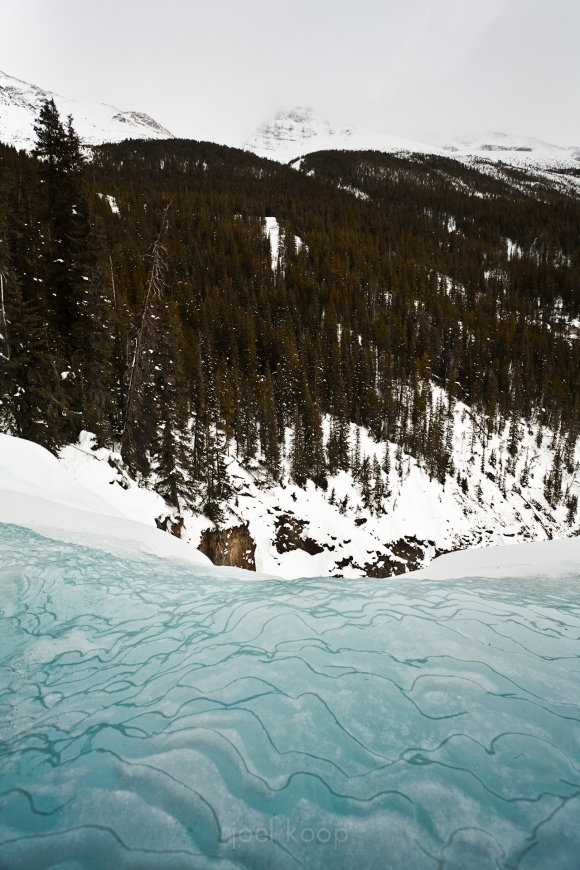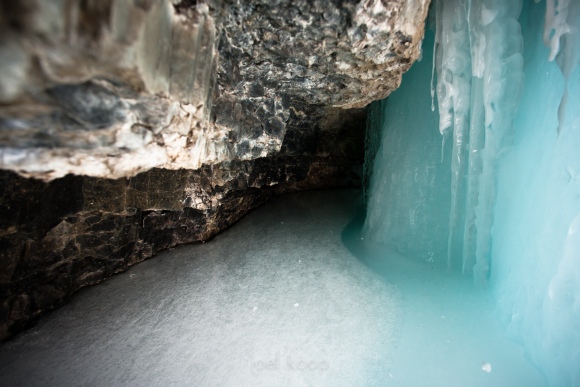After being blown around on Abraham Lake, I was looking forward to getting out of the wind. I was also interested in seeing Mistaya Canyon and Panther Falls in the winter, and both are fairly close. I had a cold but filling breakfast in the car and drove to Mistaya Canyon. I was really looking forward to it, but as I drove up the snowbank blocked my view out of the passenger window. This 4 foot deep snow dampened my enthusiasm a bit, and I was really enjoying the music, so I decided to go see if Panther Falls looked more accessible.
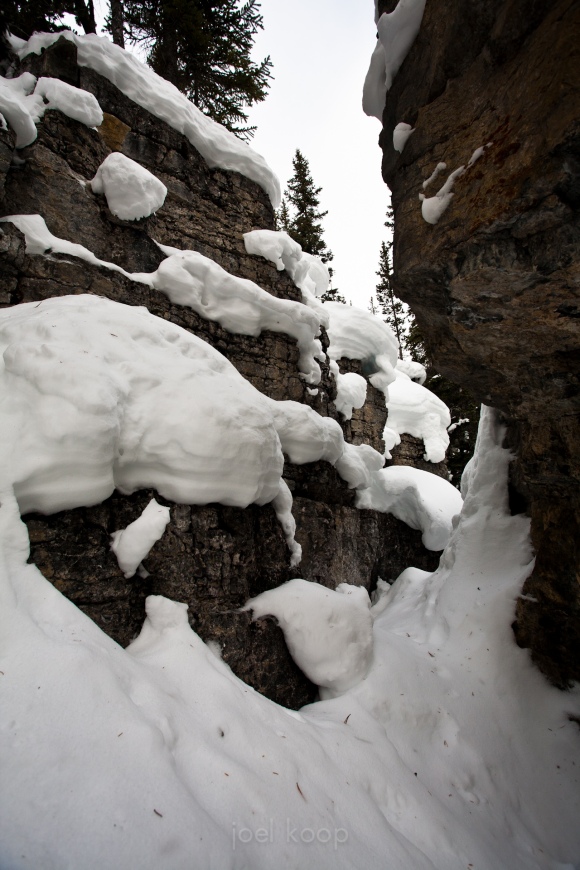
This may have been a mistake. Panther Falls did look much more accessible, but as I walked down the hill I started to have my doubts. I sunk down to my waist at the bottom of the hill, but I was determined. I decided to press on. It was an arduous process, but I made my way to the middle of the falls with no trail to follow. In summer, this would be a 5 minute walk, but I think it took me 45 minutes. I realized once I got there that the bottom would have been more interesting, but I was already pretty tired. So I relaxed on the ice by the falls, had a couple of energy bars, and then started the trek back up to the top.
Don’t try this without crampons. I was nervous enough even with them on.
Once I finally got to the top, I was tired of deep snow. And I was still tired of being blown over. So I drove leisurely back to Abraham Lake, enjoying the mule deer, whitetail deer, and elk. The burnt area from my previous post is also in this stretch. This time, instead of going to the center of the lake, I stopped right at the west end at Preacher’s Point. This turned out to be a great decision. Lots of interesting ice here and beautiful weather. I spent the afternoon puttering about on the ice, thoroughly enjoying myself and taking lots of photos.
Late in the afternoon I returned to the car, had some scrumptious chili, and emptied my memory card to my laptop. After another few small stops here and there along the lake, I headed home through winter rain.
